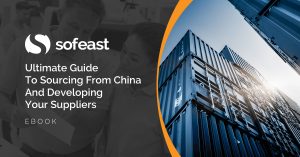The COVID-19 virus is spreading rapidly throughout the world.
Wikipedia keeps count of it, country by country. This website show interesting maps that are kept up to date. Some countries are under-reporting their toll (Iran), while others are going over the top (Nth Korea). It is all happening right before our eyes!
What does it mean for importers of Made-in-China goods who can’t, or won’t, visit China right now? Read on to explore its effects and a helpful list of actions you can take to keep your Chinese suppliers motivated and on track without visiting China…
The effects that COVID-19 is already having on importers
This novel coronavirus outbreak in China has already affected importers in the following ways:
- Many production delays — both confirmed and to come, as labor and material shortage snowball down the supply chains
- A higher-than-usual risk of quality issues, as I wrote last week
- A risk of rapidly rising prices, as manufacturers struggle to recruit workers and wages increase
- Pressure from investors and/or customers to move some production into other countries
- Far more difficult trips to visit suppliers in their factories
Many buyers will be unable to go to their factories
For many companies, sending staff to China will actually be near impossible, for 2 reasons:
- Many countries and companies have requested people coming back from China (and sometimes also from Hong Kong) to stay in quarantine for 14 days.
- China paid a very heavy price to contain its epidemic and it will NOT take the risk of being infected from the outside. The result: China’s Guangdong to require visitors from virus-hit countries to undergo quarantine.
A friend of mine drew this frightening conclusion of the timescale for would-be travellers to China right now:
HOW MANY DAYS TO BACK AND FORTH TO 🇨🇳
15 hours FLIGHT
+ 14 days quarantine in CHINA
+ 5 days in CHINA
+15 hours FLIGHT
+ 14 days quarantine in your HOME COUNTRY
= 36 days in total !!!!
How can you keep your suppliers working in the right direction and motivated without visiting them?
This is a very big problem for companies that are developing cutting-edge products, for example. It can also be a real issue in a country where “who you know and how well you know them” carries so much weight.
Let’s draw a list of the “jobs to be done”:
- Sourcing new suppliers — with the Hong Kong trade shows cancelled in April and the Canton Fair predicted to be near empty, as well as the quarantine measures I listed above, this work won’t get done face to face. Go for Alibaba and Global Sources, and maybe rely more on local service providers.
- Vetting new suppliers — you might have to rely on local quality assurance firms and their auditing solutions. Note that, as of March 4th, we at Sofeast (and many of our competitors) are keeping auditing to a minimum, as talking to many people in a factory is a good way of getting infected…
- Checking-in at a certain interval to review performance indicators and drive improvements, maintaining personal relationships — this might have to be done on Skype or Wechat…
- Having difficult conversations — same as above point. You might also send a representative on-site that, you are fairly certain, is well-aligned with you.
- Inspecting production quality — again, there are many quality assurance firms in China. Our inspection activity has restarted last week, and in many areas, it is getting closer to “business as usual”.
- Working with the R&D team (design, prototypes) — ramp up communication a lot. Spend more time detailing what you need, in more details. Make drawings or sketches. Get someone with good language skills to fully understand your thinking and then transcribe it all to the engineers. Do a first review of prototypes via Wechat video. All of this will reduce the likelihood of rejecting many submissions.
- Working with the NPI team (process setup, tooling…) — if needed, have some local engineers/consultants go to the factory and provide technical assistance.
- Troubleshooting production issues — same as above point.
How about you? How are you planning for this difficult situation? Share your thoughts and experiences in the comments, please.
Ultimate Guide To Sourcing From China And Developing Your Suppliers [eBook]
This FREE eBook starts from the beginning, discussing whether you need to hire a sourcing agent, and follows the sourcing process right through to developing a trusted supplier’s quality and productivity.
There are 15 chapters over 80+ pages to explore, providing exhaustive guidance on the entire sourcing and supplier development process from start to finish, including:
- Identifying suppliers,
- Negotiations,
- Quality inspections,
- Developing Chinese suppliers,
- Improving factory quality and productivity,
- and much more…


